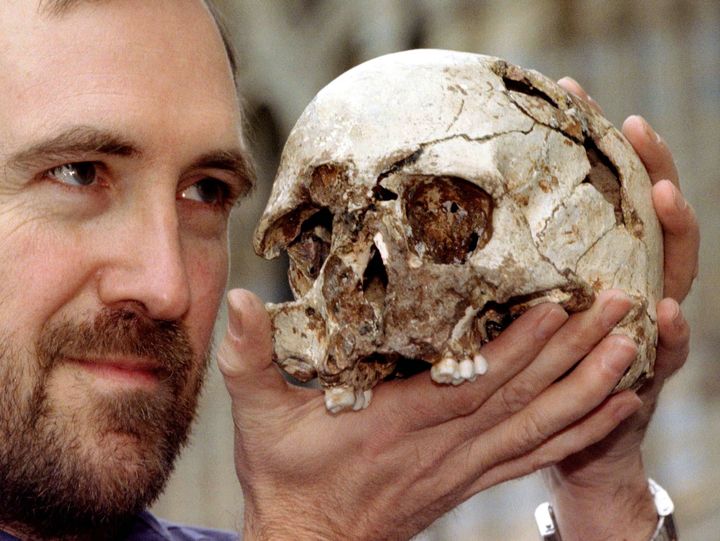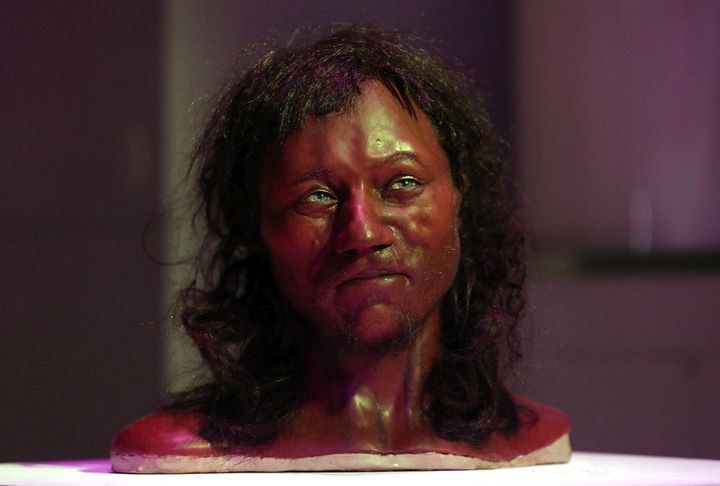The first modern Britons, who lived around 10,000 years ago, had “dark to black” skin, groundbreaking DNA tests have revealed.
The discovery came after a team of specialists at UCL and the Natural History Museum decided to examine the DNA of Britain’s oldest complete skeleton, known as Cheddar Man.
Previous reconstructions of Cheddar Man, which were not based on DNA data, depicted him with a lighter skin tone.
Professor Ian Barnes, research leader at the Natural History Museum, said: “For me, it’s not just the skin colour that’s interesting, it’s that combination of features that make him look not like anyone that you’d see today.
“Not just dark skin and blue eyes, because you can get that combination, but also the face shape. So all of this combines together and make him just not the same as people you see around today.”
Unearthed more than a century ago in Gough’s Cave in Somerset, Cheddar Man is Britain’s oldest complete skeleton.

A complete DNA analysis, along with a facial reconstruction of the fossil, shows that the young man would have had a darker complexion than previously thought, along with blue eyes and dark, curly hair.
Yet research by evolution and DNA specialists at the Natural History Museum and UCL suggests that the pigmentation associated with northern European ancestry is a more recent development.
Researchers Professor Barnes and Dr Selina Brace extracted DNA data from bone powder by drilling a 2mm hole through the skull’s inner ear bone.
They scanned the skull and a 3D model was produced by “paleo artists” Alfons and Adrie Kennis, who make life-like reconstructions of extinct mammals and early humans.

The twins, who have created reconstructions for museums around the world and usually create models of Neanderthals, spent three months creating Cheddar Man.
“It’s really nice to make a more graceful man, not a heavy-browed Neanderthal. So we were very excited that it was a guy from after the Ice Age. We were very interested in what kind of human he was,” said Alfons.
“With the new DNA information it was really revolutionary. And it allowed us to look more at race, this revealed stuff that we’d never had known before.”
Genetically, he belonged to a group of people known as the “Western Hunter-Gatherers”, Mesolithic-era individuals from Spain, Hungary and Luxembourg.
His ancestors migrated to Europe from the Middle East after the Ice Age and today, 10% of White British people are descended from the group.
Alfons said: “People define themselves by which country they’re from, and they assume that their ancestors were just like them. And then suddenly new research shows that we used to be a totally different people with a different genetic makeup.
“People will be surprised, and maybe it will make immigrants feel a bit more involved in the story. And maybe it gets rid of the idea that you have to look a certain way to be from somewhere. We are all immigrants.”
